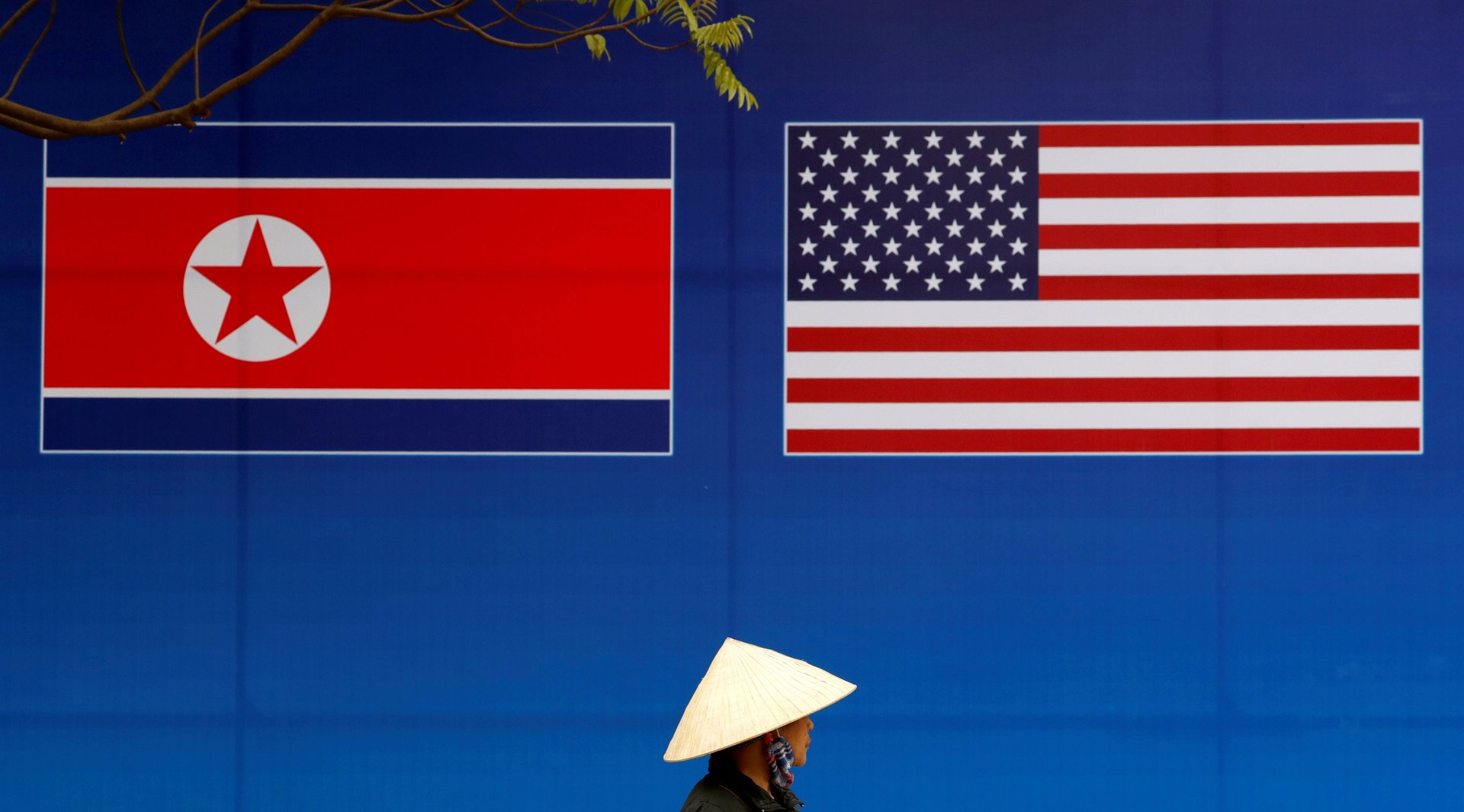What to watch for at the Trump-Kim summit
It’s hard to know what to expect when the Donald Trump and Kim Jong Un meet in Hanoi, Vietnam on Feb. 27-28. The US president has been trying to manage expectations, while his secretary of state Mike Pompeo is promising a “substantial step” toward forcing the North Korean dictator to shed his nuclear-weapons capacity.


It’s hard to know what to expect when the Donald Trump and Kim Jong Un meet in Hanoi, Vietnam on Feb. 27-28. The US president has been trying to manage expectations, while his secretary of state Mike Pompeo is promising a “substantial step” toward forcing the North Korean dictator to shed his nuclear-weapons capacity.
Analysts fear an unprepared Trump will “wing it” and make valuable concessions to North Korea while getting little in return—particularly after last year’s meeting, when Trump promised unexpectedly to end military drills with South Korea.
Here are key issues to watch for:
Actual US-North Korea agreement details
During their previous summit last June, Trump walked away with a vague commitment from Kim to “work toward complete denuclearization of the Korean Peninsula.” The one-page statement produced during the meeting in Singapore didn’t include any concrete measures of how to achieve that, specific goals or deadlines.
Though no one is expecting Pyongyang to give up its nuclear weapons at the upcoming summit, there are other meaningful steps Kim could take. For example, North Korea could submit an inventory of its nuclear program and allow international inspectors in to verify it.
North Korea has balked at previous commitments to disclose nuclear-weapons information and letting inspectors into its facilities. Last year, Kim suggested he might allow inspectors into his country’s main nuclear complex. Analysts predict the US might need to promise to lift sanctions to get Kim to move.
A Trump sellout of South Korea and Japan
Some experts fear that in exchange for North Korean concessions, Trump will weaken the US’s alliance with South Korea and Japan. Trump could, for example, suggest he might remove American troops from South Korea, which North Korea has made a condition for denuclearization in the past.
While previous US administrations have been committed to stationing troops in South Korea, Trump has repeatedly said he’s unhappy with footing the bill. Earlier this month, his administration reached a preliminary deal under which South Korea would cover $924 million of the troops’ costs, up from $830 million the year before.
An agreement that focuses on North Korea destroying intercontinental ballistic missiles that could reach the US yet lets the dictatorship off the hook on shorter-range missiles that could hit Japan and South Korea would unnerve the two American allies.
Signs of denuclearization by North Korea
The White House has stated that its goal in engaging with North Korea is its eventual denuclearization. That’s unlikely to happen anytime soon. Trump said recently a halt in weapons testing is enough to make him happy.
One in-between step would be for North Korea to agree to freeze its nuclear-weapons program (paywall). So far, the Trump administration has been no more successful than four presidents before him in getting Pyongyang to even provide a full list of its weapons.
Analysts say low expectations are realistic. “If all we’re going to do is obsess about denuclearization, people are going to be unhappy,” said Ken Gause, director of the International Affairs Group at CNA, a Virginia research group. “Kim is not going to give up” nuclear weapons right away, he said.
What’s more likely, he said, is an agreement that allows “both sides to declare victory.”